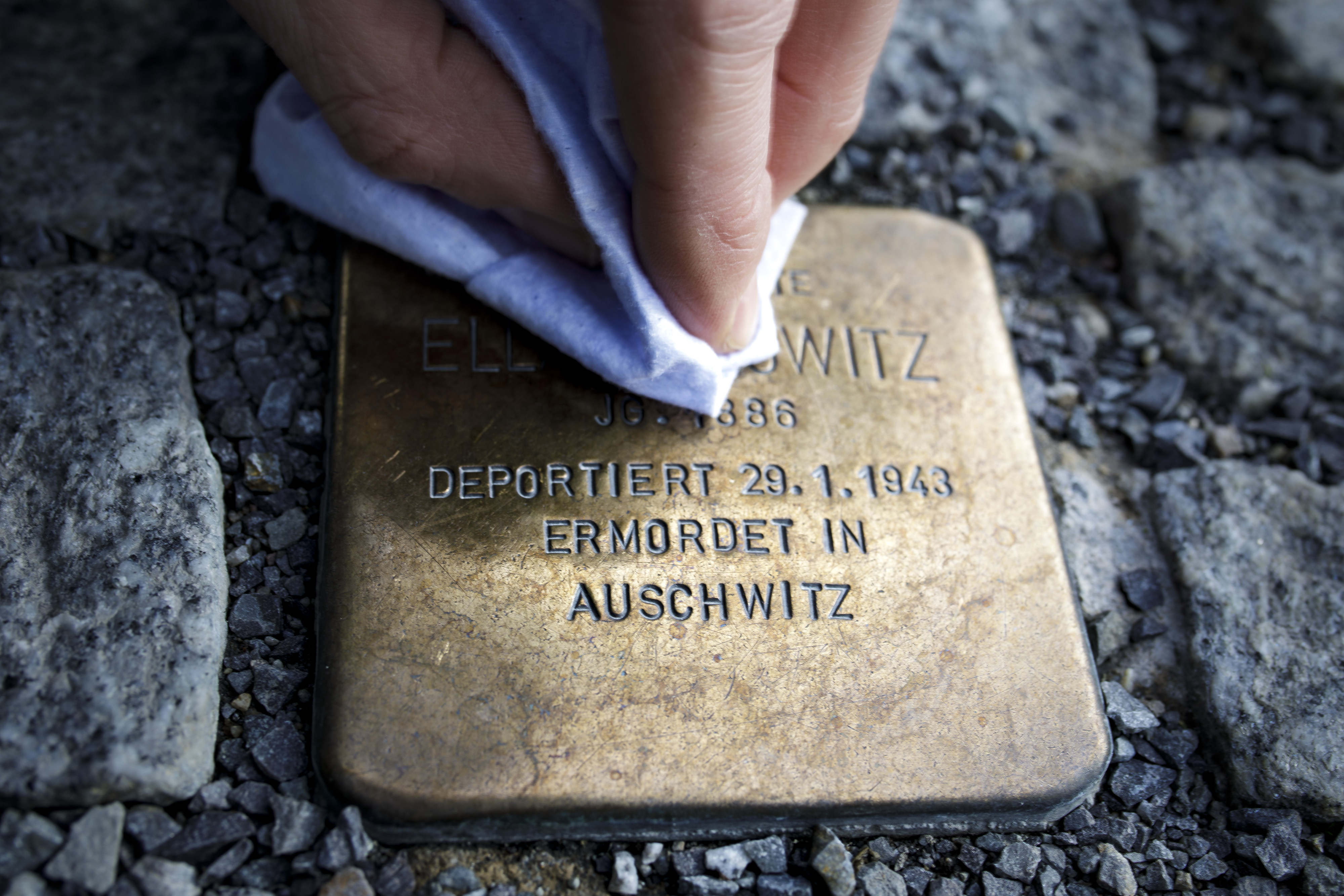Germany has long debated over how to best contextualize its Nazi past and memorialize the victims of its regime. For the past 29 years, a Berlin-born artist, Gunter Demnig, has labored to preserve the memory of the 11 million victims who perished during the Holocaust. He is memorializing their names — brick by brick.
Demnig’s motto is simple: “one victim, one stone” in reference to the Jewish teaching in the Talmud that “a person is only forgotten when his or her name is forgotten.” The Berlin artist is determined that no victim shall ever be.
He got the idea for the Stolperstein, or “stumbling stones,” in 1992 as part of an art project memorializing Sinti and Roma victims of the Holocaust. Creating plaques with the inscription ‘HERE LIVED’, Demnig went around Berlin placing commemorative stones directly in front of each of 55 victim’s last known, voluntary residences.
Since that start, the project has mushroomed into something much larger. At present, he has personally placed over 70,000 stumbling stones around the world, “spanning 20 different languages. They can be found in 2,000-plus towns and cities across 24 countries, including Argentina, Austria, Belgium, France, Germany, Hungary, the Netherlands, Russia, Slovenia and Ukraine. Together, they constitute the world’s largest decentralised memorial,” according to the BBC.
Despite the magnitude of the project, it remains a grassroots enterprise, with Demnig relying on local residents, families, and friends to research and submit the names of the victims. Demnig and his team then verifies the information and obtains permission from city governments to install the plaques, according to NPR.
Since 2005 craftsman Michael Friedrichs-Friedländer has worked alongside Demnig, continuing the artist’s mission to make each stone plaque by hand.
Friedrichs-Friedländer has steadfastly resisted any suggestion of mechanizing the process, despite the daunting scope of the endeavor.
“The Holocaust was so systematic,” he told The Guardian in 2019. “What they invented as means of mass slaughter, it was more or less automatized. We don’t want anything like that.”
Unlike larger memorials across Germany and Europe, the stones seek to personalize the violence of the Nazi regime by commemorating where the terror often began — at the victim’s home.
“I think the large Holocaust memorial here [in Berlin] will always remain abstract. You have to make the decision to visit it,” Demnig told NPR in 2012. “But not with the stumbling blocks. Suddenly they are there, right outside your front door, at your feet, in front of you.”
Each stone is inscribed in the local language, followed by the individual’s name, date of birth, and fate. Some stones detail survival and liberation, but for the vast majority — the stones relay the details of murder.
The project has been the subject of criticism, however.
In 2004 and again in 2015, Munich’s city council upheld a decision to ban Stolpersteine, with Charlotte Knobloch, Vice President of the European Jewish Congress and the World Jewish Congress, stating that it was her “firm belief that we need to do everything we can in order to make sure that remembrance preserves the dignity of the victims. For me, stumbling over a piece of metal in the ground is anything but dignified.”
Knobloch herself survived the Holocaust by hiding with Catholic farmers in the Franconia region of Germany during the war.
While the team understands the criticisms, they push back on the notion that the stumbling stones desecrate the memories of the victims. “I can’t think of a better form of remembrance,” says Friedrichs-Friedländer. “If you want to read the stone, you must bow before the victim.”





